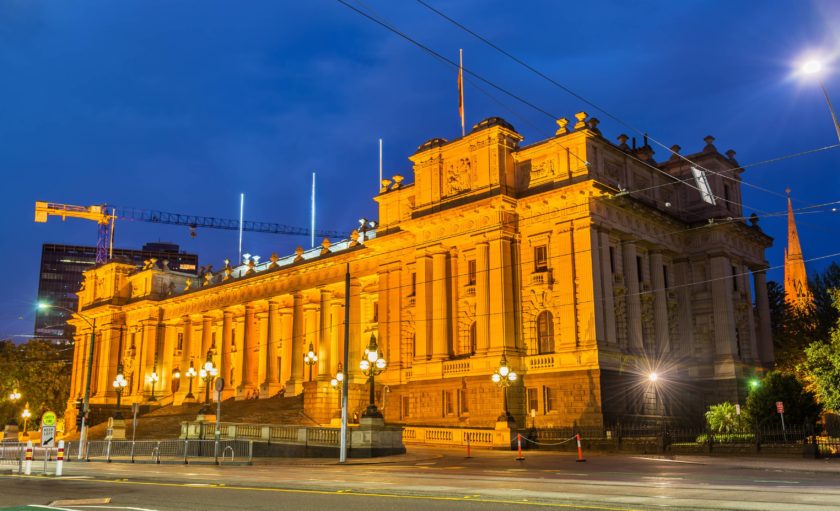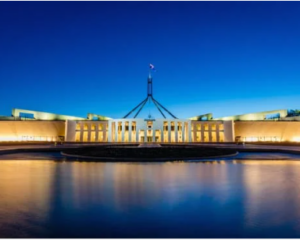The long-awaited Victorian State Budget for 2020-21 has been uncovered from government headquarters like lockdown’s treasure map to (economic) riches, meeting responses ranging from nodding to head-scratching. ‘$’ marks the spot with this Budget, plunging Victoria into record levels of debt and tracking to spend $49 billion over the next four years. On-theme but effectively one-upping its Federal counterpart, this Budget is injecting cash into every economic vein it can find in response to the sombre State that the pandemic has left in its wake.
The positives
Heavily focused on job creation, infrastructure and property development, the Budget has taken a big picture approach which has left many Victorians satisfied, donating some much-needed attention and funding to key areas in the State’s recovery. By facilitating the kickstarts of major projects like the Suburban Rail Loop and the Geelong Fast Rail, the hope is that job creation will follow, increasing the workforce by a targeted 400,000 jobs. Payroll tax takes a hit on all sides from the government as credits, cuts and deferrals look to minimise the tax across the state and use it as a tool to help boost cash flow. Coupled with a social housing package and property development incentives, as well as construction in the health and education sectors, Dan Andrews really is cosying up to the bigger players.
The negatives
This high-level solution has left some of the smaller players feeling a little neglected, namely small businesses. Arguably in the spotlight for most of the pandemic, the State Budget has no targeted cash boost or supplementary assistance for this section of the economy, with the exception of a few perks for regional businesses. Even the payroll tax credit will likely not benefit many businesses that will struggle to re-employ at all for some time. More broadly, for businesses and individuals, the natural by-product of a flush Budget will be the heavy debt and the looming taxes in the future to lighten it. However, as was the resigned conclusion on the Federal Budget, given the economy’s slowing heartbeat we hardly have a choice, do we?
Prospering Through Payroll, Property and Peregrination
The 2020 State Budget is working overtime to make up for the pandemic’s backhand to the face of a lot of businesses, by ensuring that any long-term hardships are quickly eradicated through incentives to spend. The New Jobs Tax Credit gives a payroll tax credit to businesses that are fortunate enough to have sufficient cash flow to rehire staff, restore hours, and create new jobs (or even just increase wages if there are any visits from Dickens’ spirits of Christmas Past, Present and Future). The eligible businesses are small to medium in size, as the criteria stipulates a payroll of less than $10 million. The benefit is a tax credit of ten cents for every dollar increase the business makes to taxable wages – ipso facto, the greater the increase, the higher the payroll tax savings. The initiative will be in place for two years across the 2020-21 to 2021-22 financial years, with the government estimating a total savings on payroll tax of $836 million across eligible businesses, whilst also supporting the employment of 9,400 people.
It gets better. Businesses will be allowed to defer their 2020-21 payroll tax until the following year, which will help businesses manage their cash flow as they recover and rebuild. The government is estimating this will help boost businesses’ cash flow in the state by $1.7 billion (and hopefully put those businesses who are strapped for cash in a better position to access the payroll tax credit).
But wait, there’s more! To further improve cash flow in the long term, from 1 July 2021 the threshold to qualify for making annual payroll tax payments will increase from $40,000 to $100,000. This will allow an expected 7,000 extra current businesses to free up their cash flow by paying annually instead of monthly.
Regional Victoria
Regional Victorian businesses (and businesses considering going regional) will be happy to hear that the already reduced rate of payroll tax will be decreased to 1.62% from 1 July 2021, and then decreased even further to 1.2125% from 1 July 2022, the lowest rate anywhere in Australia.
The government has other cards up its sleeve to encourage the ‘go regional’ relocation as well, intending to bring forward the 50% stamp duty concession on the purchase of regional commercial and industrial properties to 1 January 2021. Furthermore, for suburbanites pondering a sea-change or tree-change in light of the sure-fire uptake on flexible working arrangements, stamp duty waivers have been announced on existing and newly built homes under $1 million of 25% and 50% respectively – a sweet deal for anyone looking beyond metropolitan Melbourne to start their “new year, new me” resolutions. For a more detailed explanation of these stamp duty waivers click here. For all the perks and concessions of being a first home buyer in Victoria click here.
For those not yet adventurous enough to escape to the country permanently, how about a temporary visit? The Budget is spruiking local travel with a $465 million tourism recovery package, with spending on improving tourism infrastructure around the state and providing a $200 voucher for any Victorian who spends at least $400 on accommodation or tickets to attractions and tours. This will be welcome across the state as tourism operators look to offset at least some of the lost income from international tourism. There are only 120,000 vouchers on offer though – so regional businesses might need to do a bit of advertising if they want to see that public and private cash flow into their region above others.
The Plight of the Casual Workers
After making an appearance in the exclusive eligible JobKeeper employees club, the Budget has announced that some casual employees are now eligible for sick leave entitlements. Primarily it will be hospitality, aged-care workers, cleaners, security guards and supermarket workers that make up the projected 650,000 who will be part of this trial, initially funded by the government but ultimately funded through employment levies should the program continue. This particular aspect of the Budget is in direct response to the ‘worst-case’ outcome of insecure work which manifested during the pandemic, where casual workers felt financial pressure to attend work when unwell.
It’s an interesting acknowledgment of the upcoming WorkPac v Rossato decision, the verdict looking to grant some permanent employee entitlements to casual employees who worked regular and predictable shifts, which has been a rort in the mining industry for some time. It could set a very expensive precedent if employers are required to backpay in similar situations, and begs the question as to whether double-dipping is taking place with the theory that casual workers are effectively being paid twice for leave entitlements, given the casual loading rate.
On this note, and also on a Federal level, the government’s new workplace reforms in this area are also putting forward that casual workers who have been with the same employer for a year and in regular shifts for six months must be offered permanent employment. The definition of casual employment is also set to be changed, with stricter consequences for employers who knowingly underpay workers.
We can only assume that the method to the madness is the government’s encouragement to employ staff on a more legitimate basis where appropriate, to provide more stability across the workforce if it is ever shaken to this unprecedented extent again.
Should you have any questions about the Victorian State Budget and what it means for your business, please contact your Morrows Advisor.
Morrows Press Club – Hannah Bennett and Zoe Cook





